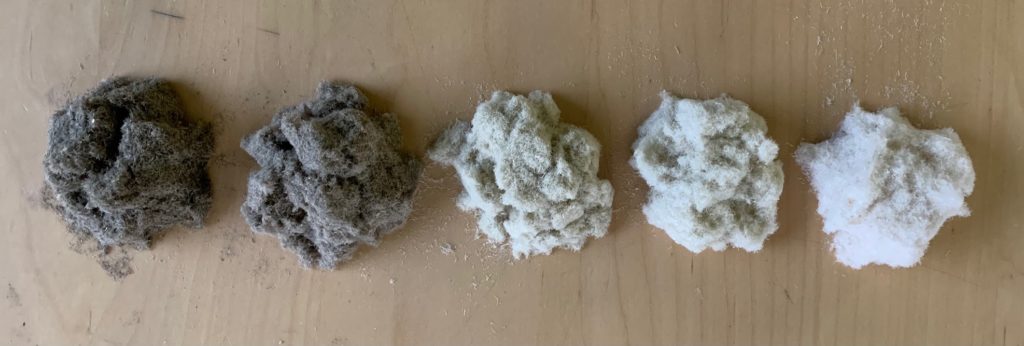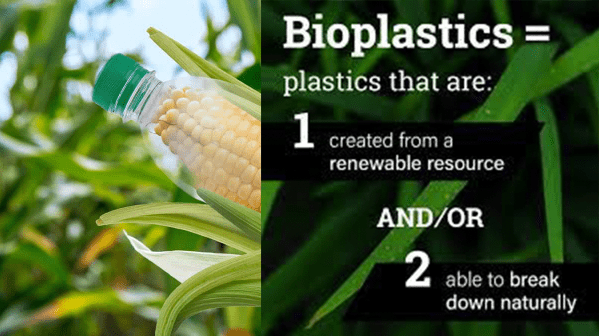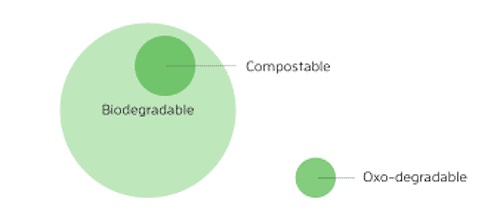Pollution caused by plastics has become a serious worldwide problem. Researchers and businesses believe that biodegradable, plant-based plastics – including those produced from hemp fiber – can become a sustainable and environmentally-friendly alternative for companies around the globe.
The Scale of the Problem – and the Opportunity
Researchers quoted by the United Nations Environment Programme (UNEP) estimate that more than 8.3 billion tons of plastic has been produced since the early 1950s. Of that amount, about 60% has ended up in either landfills or the natural environment.
At the same time, the UNEP website noted, more than 99% of plastics “are produced from chemicals derived from oil, natural gas, and coal – all of which are dirty, non-renewable resources. If current trends continue, by 2050 the plastic industry could account for 20% of the world’s total oil consumption.”
However, as more cities and even countries consider or implement plastic bans, the market for biodegradable plastics has grown significantly. According to a report published last September by the Indian-based research firm Report Ocean, the biodegradable, plant-based plastic market in Europe alone was valued at $0.8 billion in 2019 and is projected to reach $1.9 billion by 2027, representing a compound annual growth rate (CAGR) of 10.9% during that span.
The Hemp Plastics Alternative
Paul Albee is a New Jersey-based consultant. His firm, P3N Technology, works with businesses on the development of additives for polymer plastics. He said that hemp fiber is both lightweight and has tensile strength, making it a plausible potential replacement for fiberglass and other mainstream plastics in a wide variety of uses: from construction to packaging to the transportation sector.
“Over the years, roughly the last ten years, there’s been a lot of interest in using natural fiber to … replace glass fiber in those types of applications,” he told Hemp Benchmarks. ”And even more so, the natural fibers would have acceptance in the marketplace in bio-based polymers, which are in the market today.”
The technology to create hemp bioplastics is still in its early stages. Most “hemp plastics” currently on the market are actually a blend of hemp fibers with other plastic compounds. Albee noted that the concept of plant-based plastics replacing their petroleum-based counterparts is being seen by more businesses as a cost-effective and sustainable option. However, he added, “it takes a group of disciplines to develop a product.”
Still in the R&D Phase
The use of hemp fibers to manufacture plastic compounds is, at least for now, a complicated process. After decortication, the hemp fibers have to be stripped of their lignin – the organic polymer found in hemp and other plants that makes them rigid and “woody” – as well as its pectin protein, waxy deposits, and other biological compounds.
Some companies are already pioneering their own processes to create plastic compounds using hemp. Albee is currently working with Addisperse, Inc., a Pennsylvania-based manufacturer of modified plastics, as the company develops its own hemp-based plastic compounds. Anthony “AJ” Campione, the company’s operations manager, told Hemp Benchmarks that their work with hemp is still in the research-and-development phase. The company, he said, has a proprietary process to wash and chemically modify the surface of the hemp fibers, while also improving its color and removing any odor.
“We’re hoping to be producing either compounds, or even a master batch of 30%, 40% treated, modified hemp fiber, that can be used in automotive applications, packaging, toys,” Campione said. “Right now we are still working on developing the cleaning and treatment process, which we’ve got to scale up; then scaling the extrusion process and more testing. Once we get test approval, we can get interest from good customers.”

What Success Could Look Like
The tipping point for hemp plastic compounds, according to Campione, will be when a company that is “two or three levels away” from a General Motors-sized corporation begins selling high volumes of hemp plastics to large-scale businesses. “The reduction of fossil fuels, reducing petroleum can be huge,” he said. “I believe it’s the future to reduce the impact on our environment. … We need to do something, but we’re not there yet.”
Others in the hemp plastics sector agree the time is ripe for the industry. “It’s very early stages for hemp,” Glen Kayll, President and CEO of Hemp Plastics in Colorado, said during an interview last year with the Packaging Gateway website, “but it is fundamentally a disruptive technology, driven by massive deregulation, which continues to play out around the world. The big swing in North America was the CBD market,” he added, “which creates large amounts of industrial hemp waste that has made this opportunity more possible.”
For his part, Paul Albee believes the biggest challenge for a future hemp plastics market in the United States will be the creation of consistent and dependable supplies of domestic hemp fiber. Initial work on developing hemp plastics with Addisperse was done using hemp fiber from France, he told Hemp Benchmarks, but some sourcing of raw materials from domestic companies has followed.
Success, Albee noted, is dependent on at least three factors: the development of the needed technologies, an adequate number of raw material suppliers, and the establishment of a base of businesses to create hemp plastics.
“Like most things … [hemp plastic compounds] will end up being developed by smaller entities,” he said, “and those entities usually run into resource limitations. In an area like this, it’s a step at a time; the ability to marry technology with acceptable applications.” Albee estimated that the commercialization of hemp plastic compounds could begin within the next 12 to 18 months. “Once it starts, success builds on success and will accelerate,” he added. “But the grunt work to [reach] that first stage will take about one-and-a-half years.”




Pura Vida Bioplastics = Real Certificates USDA BIO-BASED, TUV, BNQ, GREEN AMERICA Home Compostable – Breaks down 3-4 months without Chemicals
Get a Quote